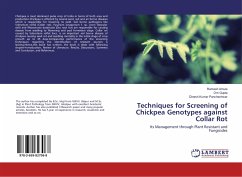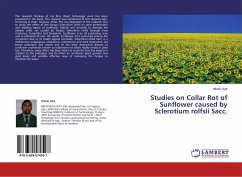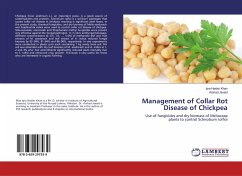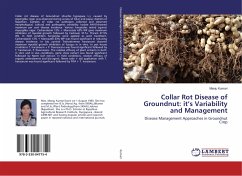Soybean (Glycine max L.Merill) has been found to affect and considerable losses caused by collar rot incited by Sclerotium rolfsii Sacc. Seed treatment with fungicides Carbendazim +Thiram in field and pot culture was found effective and significantly reduced pre-and post-emergence mortality in soybean Cv.MAUS-71 thereby increased the seed yield as well as test weight . In pot culture evaluation of bioagents and plant extracts , T.viride +T.harzianum combination and Neem extract was found effective in reducing pre-and post-emergence mortality. All the fungicides (7), bioagents (5) ,plant extracts (9) and non-target pesticides (8) evaluated in vitro (1000 and 2000 ppm) were found fungistatic/fungitoxic against S.rolfsii.However, Propioconazole recorded highest mycelial inhibition (85.28%), bioagent T.harzianum recorded(73.33%) maximum inhibition of mycelial growth, Neem extract was found effective (10 and 20 %) and recorded highest inhibition (73.37%).Nuvan was found most effectiveamong the other pesticides and recorded maximum mycelial inhibition (72.03%) of the test pathogen.








